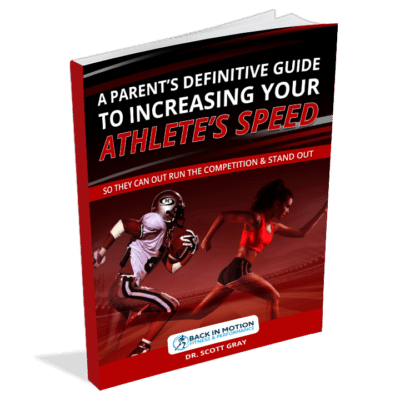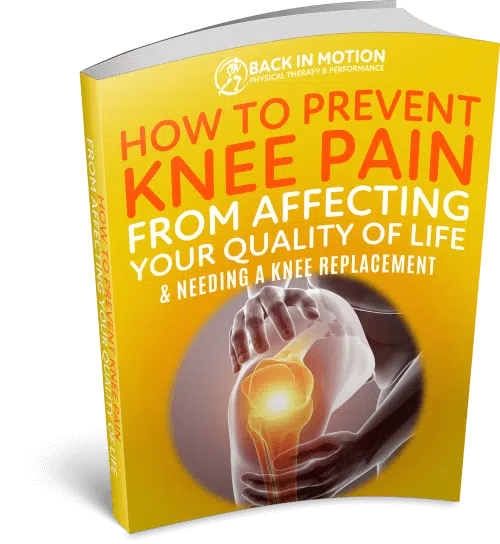Common Mistakes in Speed Training
You’re putting in the work, training for hours, days on end, but not seeing any improvement in your speed.
What gives?
With a great speed training program, you should start getting faster in less than a month and continue to get faster as you adjust the program to new goals.
Our team of experts at Back In Motion athletic performance training Fort Myers share the secrets to speed.
If months have gone by and you’re still not making progress, chances are you’re making one of these common mistakes in speed training workouts:
Confusing Conditioning with Speed
Athletes aren’t the only ones guilty of this – coaches frequently confuse conditioning drills with speed drills and then wonder why their athletes aren’t getting any faster.
The fact is that no matter how many conditioning drills you do, it will not improve your speed very much. This is because conditioning drills train your aerobic system whereas speed training drills train your anaerobic system.

In short:
- Conditioning (aerobic) drills focus on getting the maximum amount of oxygen to carry an athlete through a long period of exercise
- Speed (anaerobic) drills focus on maximizing the performance of fast-twitch muscle fibers in the absence of oxygen, meaning for short bursts of exercise where oxygen is not needed
Think about it this way: a marathoner needs plenty of oxygen intake to get through a 26.2-mile race, but a 100-meter sprinter relies on the quickness of their legs rather than how much air they can gulp down.
Want to See How We Can Help You?
Claim Your Free Fitness or Performance Consultation…
The fastest sprinters in the world, like Usain Bolt, take only a couple of breaths to power through a 100-meter sprint.
In order to perform speed drills that train your fast-twitch muscle fibers, you must have full rest between each rep, or it will quickly turn into aerobic rather than anaerobic training.
This leads us to our next mistake…
Not Enough Rest between Sets & Reps
There’s no quicker way to turn a speed training workout into an endurance workout than to not allow yourself enough rest between sets and reps.
If your speed training workout involves 20-50-meter sprints at full-speed, for example, and you only take 30 seconds between each rep, you will tire too quickly to perform the rest of the reps at your max speed.
With the increasing exhaustion due to short recovery periods, you will finish your sets much slower than your max speed and start sucking in extra oxygen along the way.
The result? You once again end up training your aerobic fitness rather than your speed.
A general rule of thumb when it comes to the recovery between reps is to rest one minute for every 10 meters of sprinting. Do not begin another rep or set until you feel ready to run at 100% effort again.
Not Enough Rest Days

Photo by Victor Freitas on Unsplash
Just like you need full recovery between reps and sets to make your workout a true speed workout, you need enough rest days to allow your body to perform at 100% on your speed training days.
The amount of rest days you take depends on how consistent your training has been and how fit you currently are.
If you’ve trained an average of three days per week, you do NOT want to suddenly start training six or seven days a week.
Your body needs to adjust so that it has the energy to carry you through the more explosive workouts.
Begin by adding a few minutes of speed training once a week, see how your body feels (your muscles may feel sore, but this soreness should disappear within 72 hours), and gradually increase until you are doing longer speed sessions about twice a week.
The key here is to listen to your body.

When it comes to speed training exercises such as plyometrics and Olympic weightlifting, you need to feel that you can perform at your maximum capacity.
Some signs that you are not including enough rest days into your speed training include:
- persistent soreness that lasts throughout the week
- fatigue, especially during and after workouts
- frequent colds (overtraining breaks down the immune system)
- sports performance declining or remaining at a standstill
- feeling that you just can’t get to 100% effort when trying an all-out sprint or speed drill
Instead of performing speed training every day (which inevitably leads to more harm done than good), focus on different areas of your sports performance each day.
Devote one day to strength, for example, another to endurance, another to agility, etc. Focusing on different areas of your performance each day will help you get the rest you need and enhance your overall sports performance.

GET YOUR FREE REPORT
Free Special Report Reveals….How to Increase Your Athlete’s Speed
Not Using Strength Training
Starting a speed training program without including strength training is a setup for disaster.
Speed mostly comes from your muscles, after all, so excluding strength exercises from speed training will prevent you from reaching your full potential (and increase your sports injury risk).
Strength training for speed includes exercises that build lean muscle and adapt your body to quick bursts of power.
To get the most from strength training, you will want to treat it similarly to your speed reps and sets. You will focus on explosive movements at maximum or near-maximum effort and long recovery periods between sets and reps.
Olympic weightlifting, plyometrics, and multi-joint exercises (exercises that strengthen multiple joints/muscles at the same time) are a must when it comes to constructing a great speed training program.
Breaking Out all the Gear and Gadgets
Sprinting with a weighted sled and doing drills with a parachute are great ways to improve your speed.
But if you haven’t mastered the fundamentals of speed training, it’s best to let the gear and gadgets rest.
Before you break out the heavy-duty equipment or try intensive plyometric exercises, you need to conquer the basics.
You need to perfect your form during your speed training drills and strengthening exercises before you can move onto the trickier moves.

Otherwise, your season may come to an untimely end.
Pulling out the gadgets before your body is accustomed to basic speed drills is a recipe for a sports injury.
Many athletes have ruined their season with a pulled hamstring or back strain because they didn’t master the fundamentals before moving on to more complicated drills that involve special equipment.
Here’s the Best Way to Avoid Speed Training Mistakes
The easiest way to improve your speed and avoid training mistakes is to see a sports performance expert.
Our sports performance trainers at Back In Motion Physical Therapy & Performance in Fort Myers, Florida, are NSCA certified – a level of certification that goes above and beyond what most sports performance trainers have.
Our skilled sports performance training team will make sure you don’t make any mistakes in your training. You will learn invaluable training skills that will have you reaching higher speeds and goals in no time! Click here to learn more about our speed training program in Fort Myers, FL.









